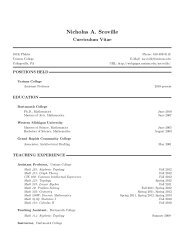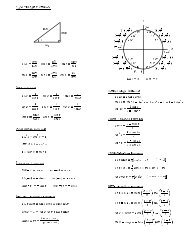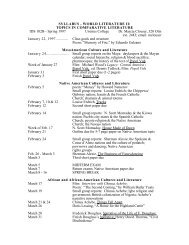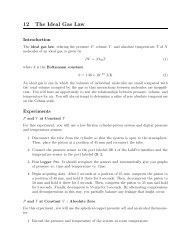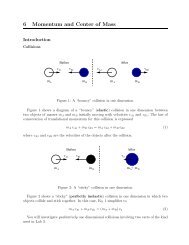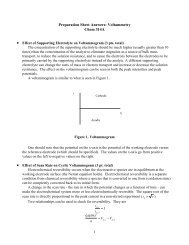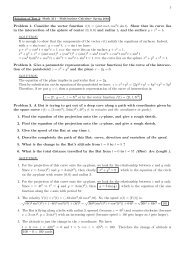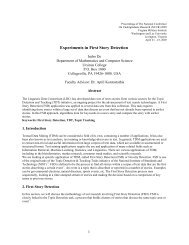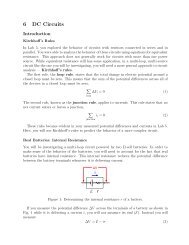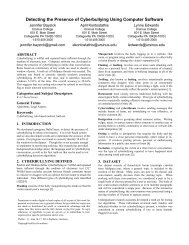Detecting the Presence of Cyberbullying Using Computer Software
Detecting the Presence of Cyberbullying Using Computer Software
Detecting the Presence of Cyberbullying Using Computer Software
- No tags were found...
You also want an ePaper? Increase the reach of your titles
YUMPU automatically turns print PDFs into web optimized ePapers that Google loves.
Bayzick, <strong>Cyberbullying</strong> 15IV DatasetOur dataset consists <strong>of</strong> chat transcripts crawled from MySpace.com. Theconversations are thread-style forums, where a general topic is included in <strong>the</strong> creation <strong>of</strong><strong>the</strong> thread. Many users can post in <strong>the</strong> thread, and conversation usually deviates from <strong>the</strong>starting topic. When working with <strong>the</strong>se conversations, we considered a post to be a singlebody <strong>of</strong> chat text posted by a user at one time. The body <strong>of</strong> text could contain multiplesentences or even multiple paragraphs and still be considered a single post. Because <strong>of</strong> <strong>the</strong>interactive nature <strong>of</strong> cyberbullying, <strong>the</strong> conversations were processed using a movingwindow <strong>of</strong> 10 posts to capture context.Undergraduate research assistants from <strong>the</strong> Media and Communications StudiesDepartment developed a truth set for testing our algorithms. These individuals were givendirections for coding found in <strong>the</strong> codebook in Appendix A along with <strong>the</strong> definitions foundin sections III and IV. They reviewed each window and indicated whe<strong>the</strong>r or notcyberbullying is present. Three assistants coded each transcript, and a voting method wasused, where a window was considered to contain cyberbullying in <strong>the</strong> truth set if at leasttwo humans flagged it as such. These labelers also identified <strong>the</strong> type <strong>of</strong> cyberbullying and<strong>the</strong> lines that are involved in <strong>the</strong> instance <strong>of</strong> cyberbullying, but this information is notcurrently being used. Interestingly, though <strong>the</strong> coders generally agreed on <strong>the</strong> presence orlack <strong>of</strong> cyberbullying in a window, <strong>the</strong>y varied widely in <strong>the</strong>ir classification <strong>of</strong> an instance <strong>of</strong>cyberbullying. This can suggest ei<strong>the</strong>r that our category definitions need clarification or that<strong>the</strong> language is inherently ambiguous. In later stages <strong>of</strong> <strong>the</strong> project, <strong>the</strong> algorithms will befine-tuned in order to detect <strong>the</strong> distinction between different categories. It should be



